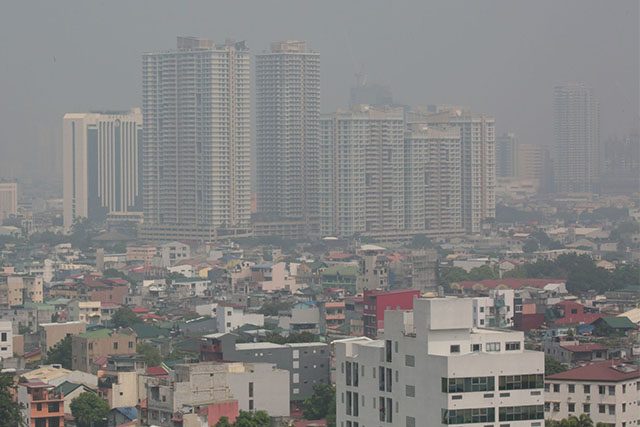
State meteorologists advised the public to wear N95 face masks when outdoors amid the volcanic smog lingering over Taal Volcano and the surrounding region.
In an advisory issued on September 21, the Philippine Institute of Volcanology and Seismology (Phivolcs) said that its Taal Volcano Network had observed volcanic smog (vog) “lingering” over the volcano since 12:30 p.m. on that day.
The network also recorded continuous upwelling that “persisted” over the Taal Main Crater Lake, thus generating steam plumes up to 2,400 meters high “before drifting to the west-northwest.”
Taal remains under Alert Level 1, which means that the volcano is still in “abnormal condition” and has not “ceased unrest nor ceased the threat of eruptive activity.”
Moreover, Phivolcs also measured a significant amount of volcanic sulfur dioxide gas emissions from the crater.
“Satellite monitors have also detected a large cloud of SO2 over and stretching west of Taal Lake today. Vog has been affecting the Taal Region since the first week of September 2023 as an average of 3,402 tonnes/day SO2 has been degassed from Taal Volcano for the month.”
This development prompted several areas in Metro Manila and Calabarzon regions to suspend classes both in the public and the private sector.
These include select cities and schools in Laguna, Batangas, and Cavite, and all levels of public and private schools in Muntinlupa, Pasay, Caloocan, San Juan, Las Piñas and Parañaque.
Filipinos also took to social media to share photos and videos of the haze. Social media posts showed dim, cloudy skies blanketing Metro Manila and nearby provinces.
Health bulletin on vog
Phivolcs advised the public to stay indoors if possible or cover their noses with face masks to prevent inhaling the toxic gas.
The agency’s preventive tips are:
- Limit your exposure. Avoid outdoor activities, stay indoors, and shut doors and windows to block out vog.
- Protect yourself. Cover your nose, ideally with an N95 facemask.
- Drink plenty of water to reduce any throat irritation or constriction.
- If belonging to the particularly sensitive group of people above, watch over yourself and seek help from a doctor or the barangay health unit if needed, especially If serious effects are experienced.
It also noted that the following people might be more sensitive to these plumes:
- People with asthma, lung disease, heart disease and other conditions
- Children
- Elderly
- Pregnant women
Panahon.TV, a multi-platform program on weather, and the Public Information Agency in Calabarzon later shared these recommendations on their Facebook accounts.
How dangerous is it?
Volcanic gas emissions such as sulfur dioxide had spread across Metro Manila, the Calabarzon region, and other nearby provinces following the tragic Taal eruption on January 12, 2020.
RELATED: Filipinos defend PHIVOLCS’ efforts in Taal Volcano monitoring amid pending investigation | Throwback Tuesday: Filipinos recall how Taal Volcano’s historic eruption affected them a year ago
Vog was also observed over these localities once again in June 2021. At that time, Taal was placed under Alert Level 2.
Following the recent volcanic activity, Phivolcs reminded the public of how dangerous vog is.
“As a reminder, vog consists of fine droplets containing volcanic gas such as SO2 which is acidic and can cause irritation of the eyes, throat and respiratory tract with severities depending on the gas concentrations and durations of exposure,” the bureau said.
Moreover, Phivolcs also warned the public about the possibility of acid rain being generated from these emissions.
“In addition, acid rain can be generated during periods of rainfall and volcanic gas emission over areas where the plume disperses, causing damage to crop and affecting metal roofs of houses and buildings,” it said.









